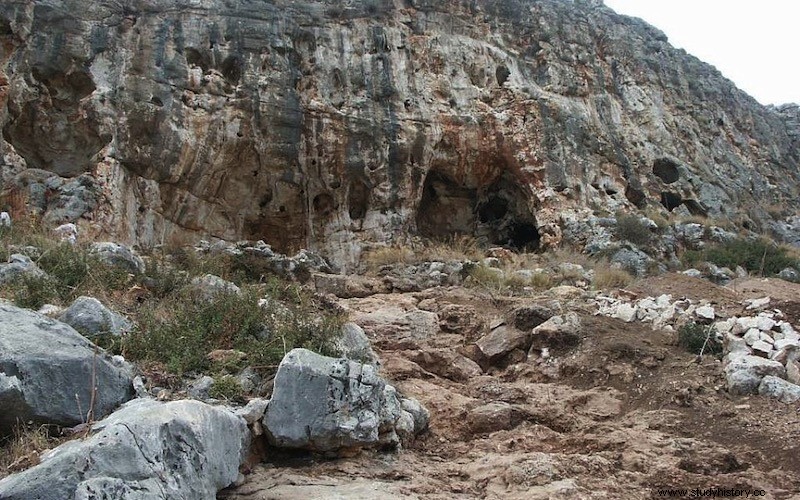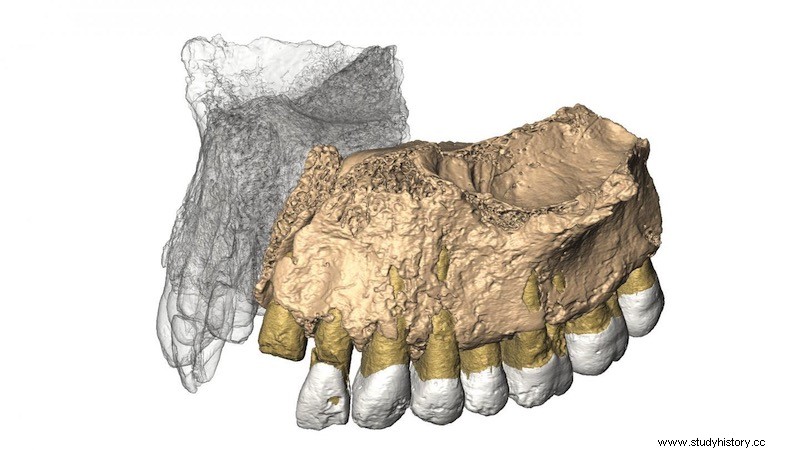A complete jawbone with teeth found in the Misliya excavations in Israel and dated between 177,000 and 194,000 years ago, provides the clearest evidence yet that our ancestors migrated from Africa much earlier than we thought , at least 50,000 years earlier than previously established.
The discovery, made by researchers from the universities of Tel Aviv and Haifa together with a team of international experts, is important because it radically changes the history of human evolution and its dispersion outside the African continent, in the words of Professor Israel Hershkovitz, of the Department of Anatomy and Anthropology at Tel Aviv University.
Anthropologists agree that modern humans, Homo sapiens, appeared in Africa sometime in a range between 200,000 and 160,000 years ago, based on evidence from fossils found in Ethiopia, and that they began migrating out of the continent some time ago. about 100,000 years.

The upper jaw now found in the Misliya cave (one of the prehistoric sites on Mount Carmel), which belonged to an adult and still has several teeth, represents a real revolution for that chronology, advancing the migration of modern humans by 50,000 years .
But also for the entire chronology of evolution, which would have to go back some 100,000–200,000 years. According to Professor Hershkovitz if modern humans started migrating out of Africa 200,000 years ago, they must have appeared at least 300,000–500,000 years ago.
Until now the remains of modern humans found outside of Africa, including in Israel, have been dated to 90,000–120,000 years ago. Remains of modern humans in China, found last year, were dated to roughly the same period.

All of the anatomical details of the Misliya fossil are consistent with modern humans, but some features resemble those found in remains of Neanderthals and other human groups. This suggests, according to the researchers, that although Africa was the origin of our species, some of our traits must have evolved or been acquired abroad.
The Misliya evidence is also consistent with recent suggestions based on ancient DNA for an earlier migration, before 200,000 years ago, with fossils found in Asia.
The inhabitants of the Misliya cave would have been hunters of aurochs, fallow deer and gazelles, they used fire and produced stone tools with innovative techniques, very similar to those found among the first humans in Africa.
